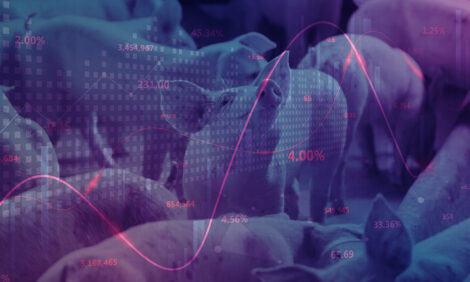



Dioxin Caused a Rocky Road for Pig Prices
When dioxin was found in poultry feed in Germany at the beginning of the year, the repercussions were felt across the whole of Europe and not just in the poultry sector, writes ThePigSite editor in chief, Chris Harris.In Germany, there were also major implications for the pig meat sector as concerns rose about contaminated feed entering pig feed.
When the contamination was first discovered, about 1,000 poultry, pig and turkey farms in Lower Saxony have been quarantined and 8,000 layers in North Rhine-Westphalia destroyed.
Eventually, the alert caused a standstill on around 5,000 farms and the German Agricultural Minister, Ilse Aigner, called for stricter, EU-wide regulation on animal feed to better protect consumers and farmers.
The feed contamination led to markets in South Korea and China closing their doors to German pig and poultry products and the company at the centre of the scandal, Harles and Jentzsch, filed for bankruptcy.
The cost of controlling the scare – testing and closing farms – has cost the industry an estimated €100 million.
However, the scandal had an even greater effect as pig prices plummeted across Europe. Prices dropped by 23 Euro-cents per kilo in a week from 135 cents to 112 cents.
The plummeting prices led the European Agriculture Commissioner, Dacian Ciolos, to introduce storage payments for pig meat.
However, the effect of the price drop was not only being felt in Germany, but also in neighbouring countries such as the Netherlands.
"The dioxin scandal hit the whole of the European pork market," said Marc van der Ley, director of communications at Europe's largest meat processor, Vion.
"It was a reasonably small issue if you look at the facts and figures but the media took over and blew the whole issue up."
He said that because Germany has a large number of quality systems checking on the quality and safety of meat products, the news that dioxin had contaminated animal feed came as a shock to the nation. The issue became an emotional one and the people then became scared, he added.
Mr van der Ley said that when the samples were lab tested and analysed, all except one were below the permitted limit for dioxin. He added that the system in Europe is also confusing because there are different allowable limits for different meats and different species.
He said that it is essential that the industry acts swiftly and promptly to communicate to the public and it also has to have a national approach to crisis communication.
When the price in Germany fell to 112 cents per kilo, the rest of Europe waited to see what would happen to prices in Denmark and the Netherlands.
The news of the price drop came on a Friday and Vion, who set their pig prices on a Monday, waited until the Wednesday following the drop to see what the market would do. For a short period, the rest of Europe was still trying to sell pig meat at 135 cents per kilo. On the Wednesday, Vion dropped the price to 126 cents – a drop of nine cents.
However, the company together with the supermarket chain, Albert Heijn, which was just introducing a new one-, two- and three-star welfare scheme, offering special prices to farmers for higher welfare reared pig meat. In order not to jeopardise the scheme, Vion and Albert Heijn agreed to offer higher prices for the higher welfare pork of 132 cents per kilo for two weeks.
The price drop and the closure of the German market also had a knock-on effect for many Dutch farmers, who traditionally exported their pigs to Germany. Many of these farmers turned to the domestic market to sell their pigs.
Mr van der Ley said that Vion made sure that it first bought pigs from its loyal suppliers and then offered the farmers, who had found the German market blocked at 126 cents per kilo.
However, Vion also added a loyalty clause, retaining six cents a kilo payable after a period, when the farmers had shown their loyalty to continue to supply the processor.
Now the market has returned to some sort of stability and prices in the current week – the first week of February – were above the pre-crisis level at 136 cents per kilo.
February 2011








